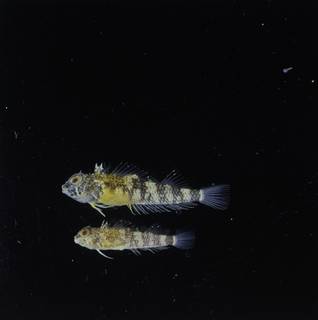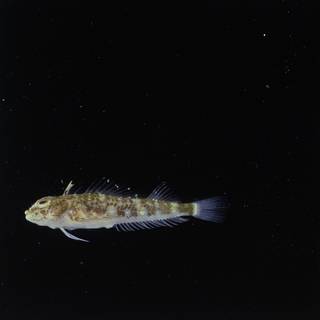WoRMS taxon details
Tripterygiidae Whitley, 1931
- Subfamily Notoclininae Fricke, 2009
- Genus Brachynectes Scott, 1957
- Genus Notoclinus Gill, 1893
- Subfamily Tripterygiinae Whitley, 1931
- Genus Acanthanectes Holleman & Buxton, 1993
- Genus Apopterygion Kuiter, 1986
- Genus Axoclinus Fowler, 1944
- Genus Bellapiscis Hardy, 1987
- Genus Blennodon Hardy, 1987
- Genus Ceratobregma Holleman, 1987
- Genus Cremnochorites Holleman, 1982
- Genus Crocodilichthys Allen & Robertson, 1991
- Genus Cryptichthys Hardy, 1987
- Genus Enneanectes Jordan & Evermann, 1895
- Genus Enneapterygius Rüppell, 1835
- Genus Forsterygion Whitley & Phillipps, 1939
- Genus Gilloblennius Whitley & Phillipps, 1939
- Genus Helcogramma McCulloch & Waite, 1918
- Genus Helcogrammoides Rosenblatt, 1990
- Genus Karalepis Hardy, 1984
- Genus Lepidoblennius Steindachner, 1867
- Genus Lepidonectes Bussing, 1991
- Genus Matanui Jawad & Clements, 2004
- Genus Norfolkia Fowler, 1953
- Genus Notoclinops Whitley, 1930
- Genus Ruanoho Hardy, 1986
- Genus Springerichthys Shen, 1994
- Genus Trianectes McCulloch & Waite, 1918
- Genus Trinorfolkia Fricke, 1994
- Genus Tripterygion Risso, 1827
- Genus Ucla Holleman, 1993
- Genus Ceratobragma accepted as Ceratobregma Holleman, 1987 (misspelling)
- Genus Enneanectus accepted as Enneanectes Jordan & Evermann, 1895 (misspelling)
- Genus Gillias Evermann & Marsh, 1899 accepted as Enneanectes Jordan & Evermann, 1895
- Genus Gracilopterygion Fricke, 1994 accepted as Springerichthys Shen, 1994
- Genus Grahamina Fricke & Roberts, 1993 accepted as Forsterygion Whitley & Phillipps, 1939 (synonym)
- Genus Helicogramma accepted as Helcogramma McCulloch & Waite, 1918 (misspelling)
- Genus Obliquichthys Hardy, 1987 accepted as Forsterygion Whitley & Phillipps, 1939 (synonym)
- Genus Rosenblatella Shen, 1994 accepted as Enneapterygius Rüppell, 1835
- Genus Taboguilla Allen & Robertson, 1991 accepted as Lepidonectes Bussing, 1991
- Genus Tripterigium accepted as Tripterygion Risso, 1827 (misspelling)
- Genus Tripterygium accepted as Tripterygion Risso, 1827 (misspelling)
- Genus Trypterigion accepted as Tripterygion Risso, 1827 (unaccepted > misspelling - incorrect subsequent spelling)
- Genus Trypterigium accepted as Tripterygion Risso, 1827 (misspelling)
- Genus Trypterygion accepted as Tripterygion Risso, 1827 (misspelling)
- Genus Vauclusella Whitley, 1931 accepted as Enneapterygius Rüppell, 1835
- Genus Verconectes Whitley, 1931 accepted as Trianectes McCulloch & Waite, 1918
marine, brackish, terrestrial
Not documented
Description Chiefly tropical and temperate. Distribution: Atlantic, Indian and Pacific Oceans. Dorsal fin tripartite, the first two...
Description Chiefly tropical and temperate. Distribution: Atlantic, Indian and Pacific Oceans. Dorsal fin tripartite, the first two segments spinous; the third with at least 7 soft rays. Spines in anal fin 0-2, usually 1 or 2. Pelvic fin jugular with a small spine. Branchiostegal rays 6 or 7. Nape without cirri. Usually ctenoid scales, bearing radii anteriorly only. First gill arch with a membranous attachment to operculum. One special feature reported for the group is that the pterygiophore supporting first segmented dorsal fin ray does not support a dorsal fin spine; three or more other pterygiophores preceed said pterygiophore. About 25 cm maximum length, mostly below 6 cm. [details]
Froese, R. and D. Pauly. Editors. (2024). FishBase. Tripterygiidae Whitley, 1931. Accessed through: World Register of Marine Species at: https://www.marinespecies.org/aphia.php?p=taxdetails&id=125572 on 2024-11-14
Date
action
by
![]() The webpage text is licensed under a Creative Commons Attribution 4.0 License
The webpage text is licensed under a Creative Commons Attribution 4.0 License
taxonomy source
Van Der Laan, R.; Eschmeyer, W. N.; Fricke, R. (2014). Family-group names of Recent fishes. <em>Zootaxa.</em> 3882(1): 1-230., available online at https://doi.org/10.11646/zootaxa.3882.1.1 [details] Available for editors  [request]
[request]
context source (PeRMS) Chirichigno, N.; Cornejo, M. (2001). Catálogo comentado de los peces marinos del Perú. <em>2ª ed. Instituto del Mar de Perú. Publicación Especial. Callao.</em> 314 p. [details]
basis of record van der Land, J.; Costello, M.J.; Zavodnik, D.; Santos, R.S.; Porteiro, F.M.; Bailly, N.; Eschmeyer, W.N.; Froese, R. (2001). Pisces, <B><I>in</I></B>: Costello, M.J. <i>et al.</i> (Ed.) (2001). <i>European register of marine species: a check-list of the marine species in Europe and a bibliography of guides to their identification. Collection Patrimoines Naturels,</i> 50: pp. 357-374 (look up in IMIS) [details]
additional source Fricke, R., Eschmeyer, W. N. & Van der Laan, R. (eds). (2024). ECoF. Eschmeyer's Catalog of Fishes: Genera, Species, References. <em>California Academy of Sciences. San Francisco.</em> Electronic version accessed dd mmm 2024., available online at http://researcharchive.calacademy.org/research/Ichthyology/catalog/fishcatmain.asp [details]
context source (PeRMS) Chirichigno, N.; Cornejo, M. (2001). Catálogo comentado de los peces marinos del Perú. <em>2ª ed. Instituto del Mar de Perú. Publicación Especial. Callao.</em> 314 p. [details]
basis of record van der Land, J.; Costello, M.J.; Zavodnik, D.; Santos, R.S.; Porteiro, F.M.; Bailly, N.; Eschmeyer, W.N.; Froese, R. (2001). Pisces, <B><I>in</I></B>: Costello, M.J. <i>et al.</i> (Ed.) (2001). <i>European register of marine species: a check-list of the marine species in Europe and a bibliography of guides to their identification. Collection Patrimoines Naturels,</i> 50: pp. 357-374 (look up in IMIS) [details]
additional source Fricke, R., Eschmeyer, W. N. & Van der Laan, R. (eds). (2024). ECoF. Eschmeyer's Catalog of Fishes: Genera, Species, References. <em>California Academy of Sciences. San Francisco.</em> Electronic version accessed dd mmm 2024., available online at http://researcharchive.calacademy.org/research/Ichthyology/catalog/fishcatmain.asp [details]
 Present
Present  Inaccurate
Inaccurate  Introduced: alien
Introduced: alien  Containing type locality
Containing type locality
Unreviewed
Description Chiefly tropical and temperate. Distribution: Atlantic, Indian and Pacific Oceans. Dorsal fin tripartite, the first two segments spinous; the third with at least 7 soft rays. Spines in anal fin 0-2, usually 1 or 2. Pelvic fin jugular with a small spine. Branchiostegal rays 6 or 7. Nape without cirri. Usually ctenoid scales, bearing radii anteriorly only. First gill arch with a membranous attachment to operculum. One special feature reported for the group is that the pterygiophore supporting first segmented dorsal fin ray does not support a dorsal fin spine; three or more other pterygiophores preceed said pterygiophore. About 25 cm maximum length, mostly below 6 cm. [details]





